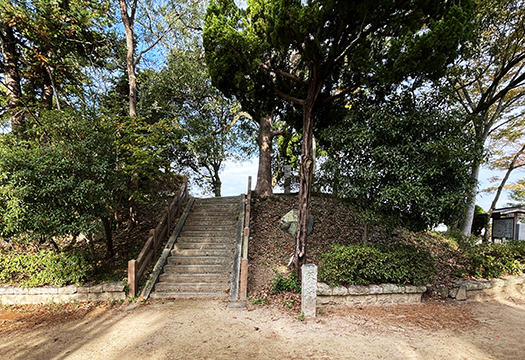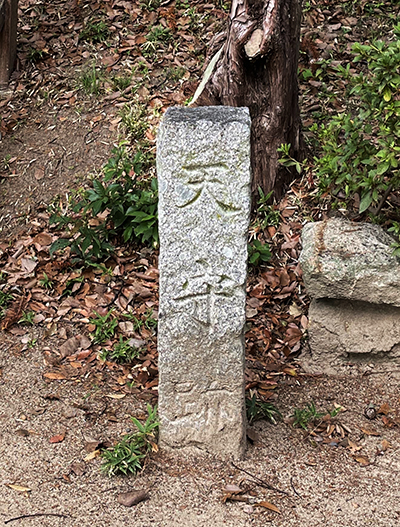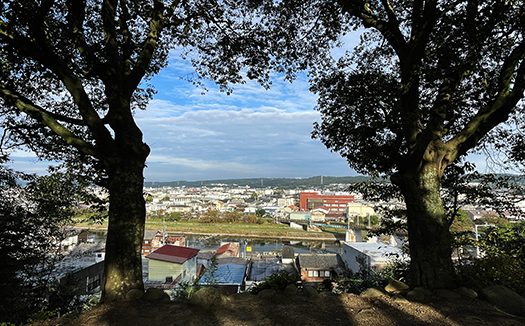


戦国時代ものが好きだというのは、いまや日本人に刷り込まれている歴史観だと思います。国民作家と言われた司馬遼太郎が、この時代を国盗り物語とか新史太閤記などで大衆的人気を絶対的なものとしたことが、たぶん大きかったのでしょうが、それに先行して多くの歴史作家が直感的にこの時代相に現代人に強く訴えてくるものがあると考えて多作していたことがあったのでしょう。
日本は文字記録による歴史時間としても2000年近い時間がある中で、直接的に権力闘争と大衆の民族史とがクロスし始めたのが、この時代だったとも言えるのでしょう。
そういうなかでこの播州における「三木城合戦」は畿内中央部を勢力下に掌握した信長が、いよいよ「全国制覇」という制服事業に向かった結節点としてあったのだと思います。そしてその司令官として秀吉が選抜されて、西国制覇の「責任者」の位置を占めたことが大きかった。同様の「合戦」はそれこそ全国各地でさかんに行われていたなかで、この「三木合戦」が有名になっていったのには、その後の統一日本の主役、信長・秀吉が活躍したことで大きな「蓋然性」があったのでしょう。いわばパブリシティ拡散の下地が大きく広がったということかと。歴史はいつも勝者の都合の良いように脚色されるものでしょうが、秀吉の戦争戦略がはじめて明確化したと言えるのではないか。
それは人的な被害を最小限化して勝利を収めるという経済優先の軍事戦略。信長の戦略が極端に言えば「皆殺し」作戦であったのに対して、戦後処理を見据えて局地戦では「時間を掛けて」戦って、敗者を「生かして従わせる」というものだったように思える。
この三木合戦に2年間を掛けたというのは、交通の要衝地であって物資輸送至便な三木城に対して、その「交通網を遮断する」という作戦だったのでしょう。三木城は先般見たように美嚢川に面していて遠く瀬戸内海交易ルートとも直結し、陸上交通では京大阪から見て「西国の入口・喉仏」に位置している。経済の大動脈地域だったといえる。
のちに秀吉が関東経営根拠地について家康にほかのどこでもなく迷わず「江戸」にすべきだと教唆したことが伝わっているけれど、秀吉という人間は、それこそ経済こそが政治を左右し、軍事を決定づけるのだと信念を持っていたのだと思う。そういう戦略眼は秀吉によって大戦略として採用された。そうした戦略が織田の「皆殺し」作戦恐怖と相俟って、かれの進撃を支えていたと思う。信長はそうした秀吉の功績を他の将に模範とせよと訓令している。
こういう兵糧攻め作戦なので城跡でも華々しさは感じられません。
English version⬇
The two-year “dry siege” of Miki Castle
The full-scale strategy for the conquest of the western part of Japan by Hideyoshi, the Oda family’s regional commander, was suddenly an “economic containment” strategy. The strategy adopted by Hideyoshi was an intelligent one. …
I think that the love of Sengoku-era stories is a view of history that is now imprinted on the Japanese people. It is probably significant that Ryotaro Shiba, who is considered a national writer, made this period absolutely popular among the masses with his works such as Kunitobori Monogatari and Shinshi Taikoki, but it was probably preceded by the fact that many historical writers had also written many works because they intuitively felt that this period had a strong appeal to people today. Japan is a country where the historical time is recorded in the form of written records.
Japan has nearly 2,000 years of written history, and it was during this period that the struggle for power and the national history of the masses began to directly intersect.
In this context, the “Battle of Miki Castle” in Banshu was the nexus point where Nobunaga, who had seized control of the central Kinai region, finally headed for the uniformed project of “nationwide conquest”. It was significant that Hideyoshi was selected as the commander and occupied the position of “responsible person” for the conquest of the western part of the country. Similar “battles” were fought in various parts of the country, but the Miki Battle became famous because Nobunaga and Hideyoshi, who played a leading role in the subsequent unification of Japan, were active in the battle. In other words, the groundwork for the spread of publicity was greatly expanded. History is always made to suit the victor, but I think we can say that Hideyoshi’s war strategy became clear for the first time.
It was a military strategy that prioritized economics to minimize human casualties and win the war. While Nobunaga’s strategy was, in extreme terms, a “kill-em-all” strategy, Hideyoshi’s strategy seemed to be to fight “over time” in local battles with a view to postwar disposal, and to “keep the defeated alive and make them obey”.
The reason why it took two years for the Miki Battle was probably a strategy to “cut off the transportation network” to Miki Castle, which was located at a strategic point for transportation of goods. As we saw earlier, Miki Castle faced the Mibugawa River and was directly connected to the Seto Inland Sea trade route, and in terms of land transportation, it was located at “the entrance and throat of the western part of the country” from Kyoto-Osaka. It can be said to have been a major economic artery area.
It is said that Hideyoshi later suggested to Ieyasu that Edo should be the base of operations in the Kanto region without hesitation, rather than anywhere else. Such a strategic view was adopted by Hideyoshi as a grand strategy. I believe that such a strategy, combined with Oda’s “kill-em-all” strategy, supported his advance. Nobunaga ordered his generals to follow the example of Hideyoshi’s achievements.
Because of this strategy of attacking with troops, even the ruins of the castle do not look spectacular.
Posted on 11月 10th, 2024 by 三木 奎吾
Filed under: 歴史探訪







コメントを投稿
「※誹謗中傷や、悪意のある書き込み、営利目的などのコメントを防ぐために、投稿された全てのコメントは一時的に保留されますのでご了承ください。」
You must be logged in to post a comment.